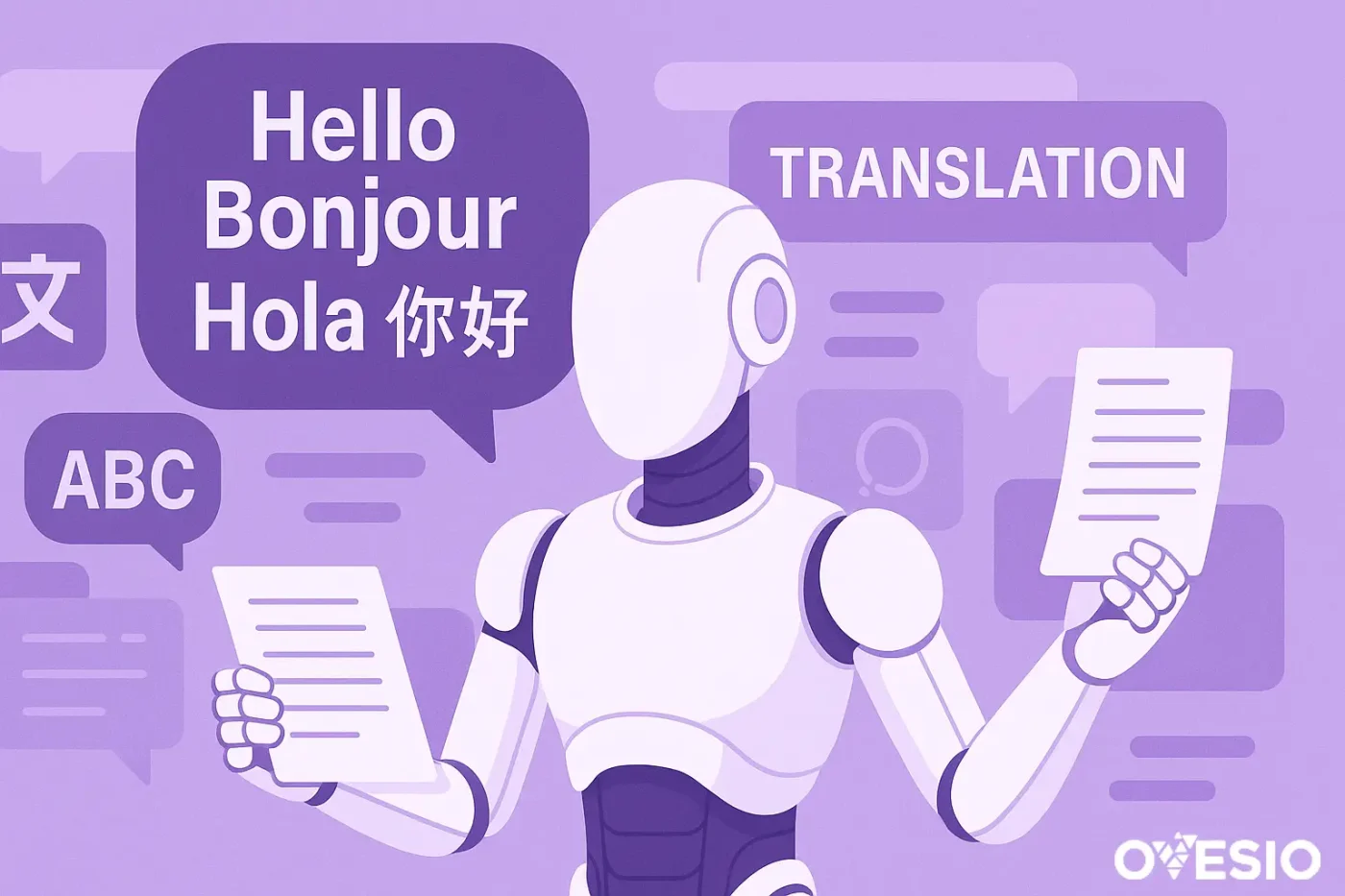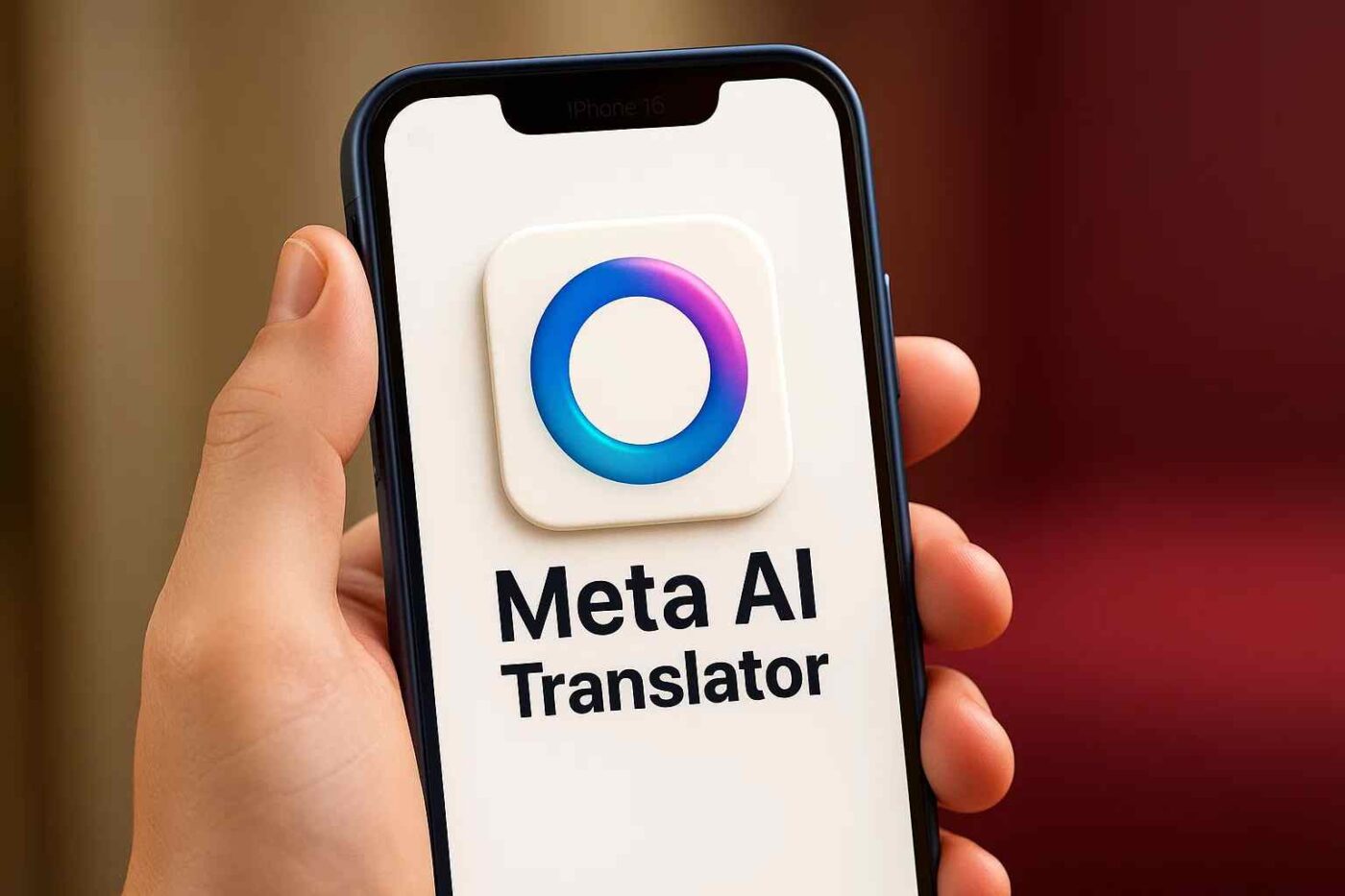5 Facts You Don’t Know About AI Translation in Marketing

Automatic translation software have been around for a long time, but only recently it started picking up more and more traction in marketing, and it’s turning into AI translations.
In this article you will learn how AI translations can 4x your traffic, boost SEO score and increase brand loyalty which will lead to many sales.
Why artificial intelligence translations, and not just automatic translations how it used to be?
Because they are just not the same thing. (nerdy terms incoming, but not many because we’re here to talk about marketing)
Google Translate launched in 2006, and it primarily relied on statistical machine translation (SMT).
The AI tools used today: GPT models (from OpenAI) or Gemini models (from Google) function much differently, and are many times better. (when used correctly)
Let’s say you use a tool that fine-tuned the models specifically for translation.
If they also added their own AI Inspector to choose the best translations and compile them into a masterpiece, you might’ve hit the jackpot.
Specifically in marketing, it is crucial to have good translations, and you will see why in a second!
1. AI Translation Will Boots Your SEO Score
If you are in an industry in which you rely on search engines for traffic, and you don’t have your blogs, landing pages and product descriptions translated into multiple languages… you’re missing out on a lot of revenue.
I can go as far as saying that you’re burning money, each second.
According to a study done by BigCommerce in April 2025:
“English-only websites reach less than 25% of internet users worldwide. Leading ecommerce platforms like BigCommerce, Shopify, and WooCommerce recognize this need and offer solutions for multi-language stores”
So you’re only getting 25% of the traffic you could have, and by applying simple math, you could make 4 times more money, just by adding more languages to your store.
Still not sure?
The exact same BigCommerce studies mentions a Gallup survey on language preferences that reveals the following shocking findings:
- 9 out of 10 Internet users said that whenever given a choice, they preferred to visit a website in their own language
- 19% never browse in a foreign language
- 42% never make any purchases in languages other than their own.
I’m not trying to be annoying here, but just image how much potential revenue, a simple translation really means.
Wanna hear something crazier?
Search Engines will also give you a boost because they prefer content in local languages when showing results. Plus, you will have more indexes pages. Double win!
Just make sure you update your SEO metatags to the new language on the translated pages because duplicated SEO metatags will give you a SEO penalty.
2. AI Translation Will Boost Engagement & Lower Your Bounce-Rate
Why would you care about bounce-rate and engagement?
Bounce-rate represent the percentage of viewers who leave the website after viewing only one page. This translates into lost sales, and also a penalization in terms of SEO.
Google and other search engines penalize websites with high bounce-rates because they will consider them “low quality” and “a bad result” since the user left after viewing only one page.
If the viewer visits only one page of the website, it means it has a low engagement too.
Engagement refers to how a user interacts with a website. Everything from scrolls, clicks, zoom, and everything you can do on a website pretty much.
If you have low engagement, search engines will rank you lower and decrease your SEO score, and Trust score, because engines perceive websites with low-engagement as “low quality” and “irrelevant to the user”.
“40% of shoppers will never buy if site isn’t in their language”
According to CSA Research (July 7, 2020)
If your website is not translated, you’re already losing 40% of the potential sales.
Since they won’t buy from your website, they won’t even look into it. Which results in a high bounce-rate, and low engagement… Which will tell Google to rank you lower.
It’s literally a dark spiral for revenue.
Same study from CSA Research (July 7, 2020) revealed:
- 65% prefer content in their language, even if it’s poor quality
- 67% tolerate mixed languages on a website
- 73% want product reviews in their language, if nothing else
- 76% prefer products with information in their own language
What shocked me the most is the fact that, just by having some poor quality translations, you can boost your traffic and sales so much.
Imagine what good translations mean.
3. AI Translation Boost Sales & Conversions
Above we talked about conversions going up strictly from a mathematical argument.
More traffic = More conversions
But that’s not all… because translations will also boost conversion-rates.
According to a study by Shopify, translation increases retailers’ conversion rates by 13% on average.
In e-commerce, localization means adapting an online store to specific cultural, linguistic, and regional preferences of a target market
A boost of 13% in sales is far from negligible. Most ecommerce businesses looking to get into the EU market (hence the need for translations) are already earning between $1M-$5M per year.
An increase of 13% in sales for a business like this can mean between $130k to $650k more money per year.
According to a research conducted by BigCommerce in 2025, 75% of online shoppers prefer to buy products with information in their own language, and 59% of non-English speaking consumers rarely or never purchase from English-only sites.
Now, put this in context with everything above.
Your sales will pretty much go up exponentially.
Btw, I mentioned the European Market above, if you’re looking into scaling your ecommerce business into the EU, I have a cool freebie that will help you do everything by the book.
Here’s the link for the EU INTEGRATION CHECKLIST 2.0™ (it’s free)
4. AI Translation Boost Brand Trust & Loyalty
According to the CSA study from above, 76% of online shoppers Prefer Purchasing Products with Information in their Own Language.
When it comes to the other 24%, they might buy, but it’s almost impossible to turn them into recurrent loyal customers because there’s a lost of skepticism involved.
I live in Romania, and I’ve been looking for some good supplement online because the ones in Romania are overpriced.
I found multiple sites, and the one I ended up buying from is one that I had absolutely no idea it was not from Romania.
Bulk.com took translating your store to the level of an art.
They did everything from landing pages, products, emails, and absolutely every single page on their website, and it’s absolutely beautiful.
I’ve been a recurring customer for quite some times, and even though sometimes the translation is not quite right, I still buy from them because of the quality of the product, and emails they send me.
What made me take the initial step, and try their products has been the fact that the website was translated so well, that I couldn’t tell it was not a Romanian brand.
Unbabel published a guide on optimizing your E-Commerce Sites for Multi-Language in which they stated:
Providing valuable and localized content establishes trust and credibility with your international customers, leading to higher search engine rankings and increased conversions.
Bulk.com translated everything, even the text on their images, and this helped me trust the brand and build this relationship with them.
They give me good protein, educational emails, and I keep buying from them 🙂
I also buy other supplement from them like Magnesium, Zinc and Vitamin D
So here’s a great example of success with multi-language.
I don’t know how to express how important translation is for brand loyalty, other than with this story of a brand that did exactly that.
5. Regulatory Compliance through AI translation
In the EU you cannot sell if you don’t have product translated.
As simple as that.
You must translate your website, product descriptions, product labels, privacy policy, terms and conditions and many other texts.
Just to be able to sell in the EU. (besides other legal stuff)
Here’s the link for the EU INTEGRATION CHECKLIST 2.0™ if you want to sell in the EU, again 🙂
As an ecommerce brand, not selling in the EU means wasted traffic (because people from the EU will visit your site) and tons of revenue uncaptured.
The Ecommerce market in the US is worth $8.3T and in the EU it is worth $6T
If you expand to the EU, you will increase your potential market by 63%. Imagine if you were to sell internationally.
If you sell in a local EU market, and you expand to the entire European Economic Area, you will increase the size of the market you sell in by many multiples.
So, if regulations are stopping you from expanding and scaling in the EU – just grab the EU INTEGRATION CHECKLIST 2.0™
It’s 100% free, I just ask for your email so I can send you more useful stuff.
Best part? If you find it boring, you can unsubscribe at any moment.
Conclusion
Multi-Language will generate a snowball effect for your business and it will accelerate your sales, brand expansion and it will open many doors to countless opportunities.
More traffic, more sales, more often (thanks to brand loyalty) and the business will grow.
Quick Actions:
- Look into how you can translate your store for the closest market possible
- Look into some tools (here are some AI translation tools)
- Start with only one language (if you come to the EU market, go with French or German)





